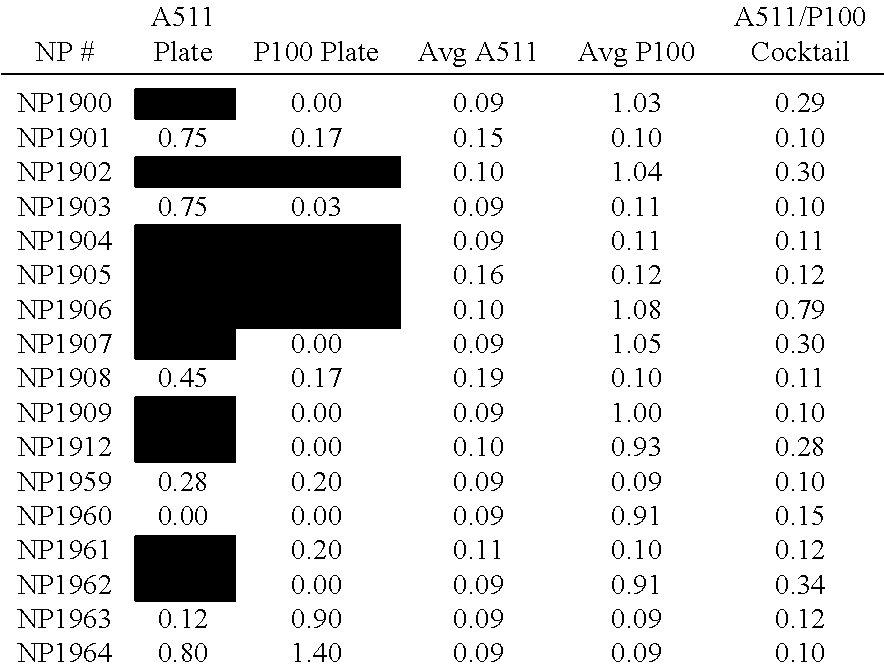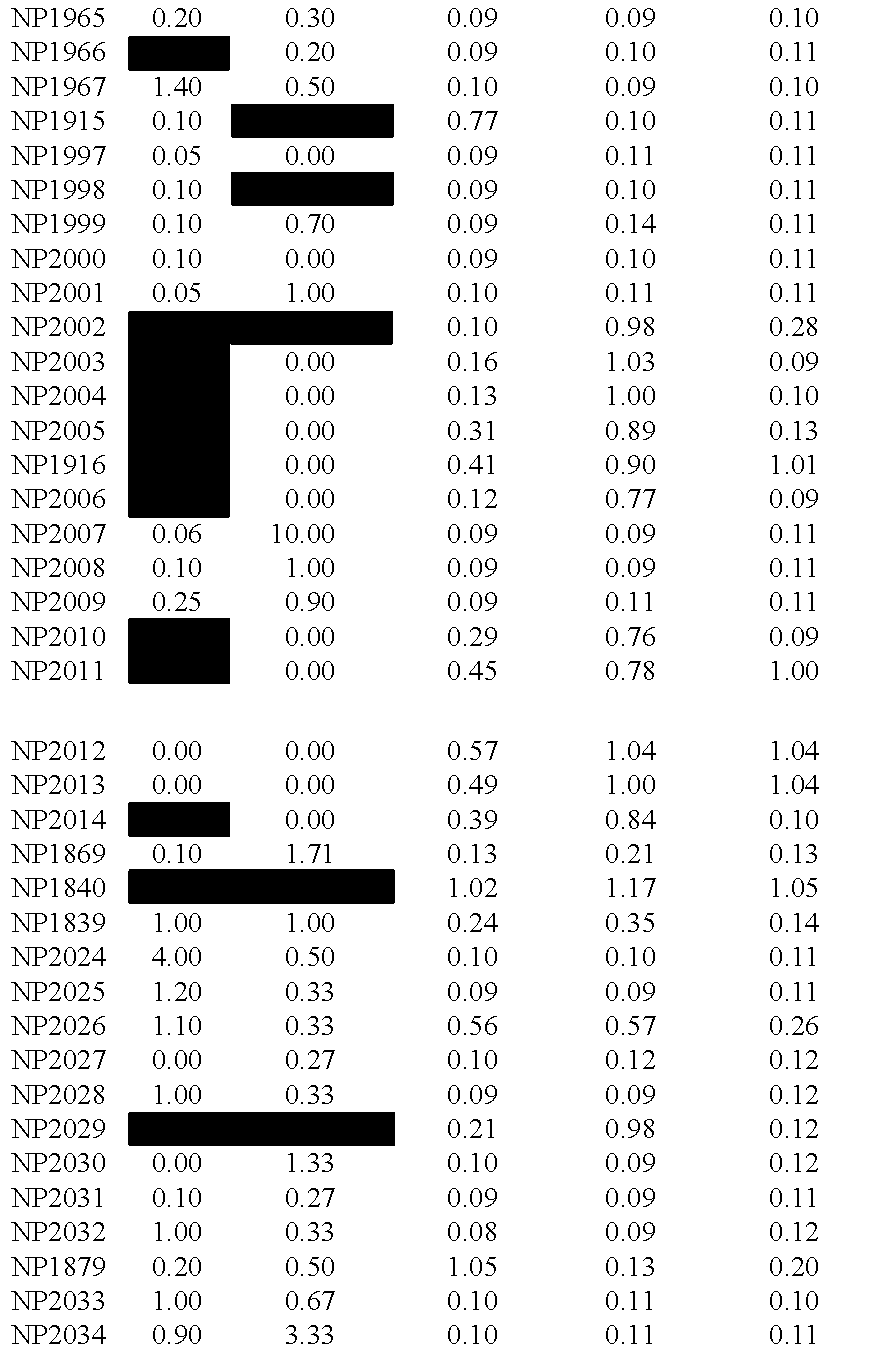Phage-based bacterial detection assay
a phage-based, bacterial technology, applied in the direction of viruses/bacteriophages, biochemistry equipment and processes, instruments, etc., can solve the problems of bacterial food-borne diseases, a significant threat to human health, contamination and infection of public health, and a million illnesses. , the effect of 325,000 hospitalizations
- Summary
- Abstract
- Description
- Claims
- Application Information
AI Technical Summary
Benefits of technology
Problems solved by technology
Method used
Image
Examples
example 1
Recombinant Listeria Phage
[0206]A novel phage engineering method was developed to create recombinant phage. This method is sometimes referred to herein as Phage Infective Engineering (PIE). This method allows insertion of a heterologous nucleic acid sequence into any desired location of a phage genome. The initial site chosen for insertion was that used in Loessner, et al. (Appl. Environ Microbiol., 62:1133-1140), downstream of the major capsid protein gene cps. The coding sequence (SEQ ID NO: 1) for the firefly luciferase (SEQ ID NO: 2) or the coding sequence (SEQ ID NO: 3) for the nanoluc luciferase (SEQ ID NO: 4) was inserted at this location.
[0207]The PIE method uses Phage Targeting Vectors PTVs which include the luciferase gene sequence flanked by ˜1 KB of phage sequence directly upstream and downstream of the desired insertion site (referred to as an upstream homology region (UHR) and downstream homology region (DHR)). Each of these inserts was created using PCR primers that w...
example 2
Preparation of Recombinant Phage
[0285]Phage lysates (stocks) were prepared as follows. A single colony of Listeria monocytogenes (for example EGD-e, at ATCC) was inoculated in 5 ml of 0.5×BHI liquid and grown overnight at 30° C. in a floor shaker at 200 rpm. The next day, 5 ml of the culture was diluted into 500 ml of 0.5×BHI in a 1000 ml flask and grown for 4 hours at 30° C. in a floor shaker at 200 rpm, or until the OD600 reached 0.15. The culture was then inoculated with 1×108 pfu / ml of a recombinant phage described in Example 9 to be propagated. The flask was returned to 30° C., and shaken at 50 rpm for 4 hours or until lysate was cleared (OD600 of <0.02). The lysate was then filtered through a 0.45 μm vacuum filter and then through a 0.22 μm vacuum filter, and stored at 4° C. until purification as described below.
[0286]Before use, phage particles were purified using methods generally as described in Sambrook and Russell, Molecular Cloning Volume 1, 3rd edition 2001. Briefly, ph...
example 3
Sensitivity and Speed of the Assay Using the Recombinant Phage
[0288]Stocks of phage LP40::nluc, LP124::nluc, and A511::nluc were prepared according to Examples herein. Those phage were used to detect Listeria in this assay. The example examines the lower limit of detection achieved by the assay and the speed of the assay.
[0289]Cultures of Listeria were grown to saturation in 0.5×BHI media overnight at 30° C. The culture was diluted 1:5 in fresh 0.5×BHI media and allowed to recover at 30° C. for 2 hours. The recovered culture was subsequently serially diluted in the same media from 1×10−1 to 1×10−8. Cell concentrations at each of these dilutions were determined by plating on non-selective media. 100 ul of each cell dilution was subsequently incubated with 100 ul of recombinant phage cocktail for 30 minutes, 60 minutes, 120 minutes, or 180 minutes. The recombinant phage cocktail was LP40::nluc, LP124::nluc, and A511::nluc at final concentrations of 1×107 each, for a total phage final ...
PUM
 Login to View More
Login to View More Abstract
Description
Claims
Application Information
 Login to View More
Login to View More - R&D
- Intellectual Property
- Life Sciences
- Materials
- Tech Scout
- Unparalleled Data Quality
- Higher Quality Content
- 60% Fewer Hallucinations
Browse by: Latest US Patents, China's latest patents, Technical Efficacy Thesaurus, Application Domain, Technology Topic, Popular Technical Reports.
© 2025 PatSnap. All rights reserved.Legal|Privacy policy|Modern Slavery Act Transparency Statement|Sitemap|About US| Contact US: help@patsnap.com



